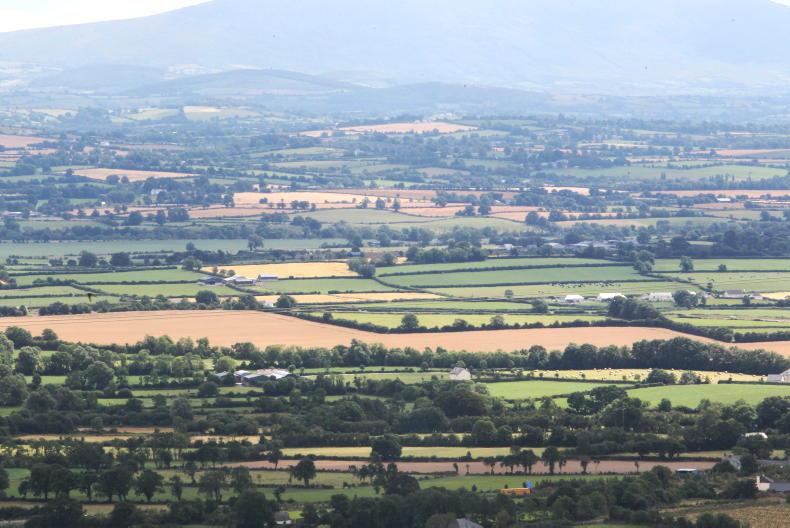Farmers need to be aware of the changes fast approaching to rights-of-way laws, the huge online attendance at an IFA meeting last week was warned.
Over 270 people logged in to a south Leinster meeting, where Isobelle Lyons and Rosemarie Carr from the Property Registration Authority of Ireland (PRAI) answered queries.
The Land and Conveyencing Law Reform Act (2009) is due to come into force from 1 December. The main change is that the period of usage required to establish a right of way is reducing from 20 to 12 years, but it must now be 12 years unbroken, immediately prior to the application being made.
The current law will apply to any applications lodged prior by 30 November next.
However, if that application is rejected, the new law would then apply.
A high number of applications are rejected due to errors in them.
Solicitor James Staines said the PRAI should take “a more benign approach” to rejecting applications, allowing a bit more time and a few more warning letters before rejecting applications. “Covid-19 has caused backlogs in solicitors’ offices and people are uncomfortable going in to deal with their solicitors,” he added.
Staines outlined the options for establishing a right of way.
The simplest is for the applicant to complete a Form 67, with all landowners signing as to their acknowledgment of the right of way on the form.
Should that not be possible, the person seeking to assert their right of way needs to fill out a Form 68.
On receipt of this application, the PRAI will then write to all landowners involved.
If no objection is made, the application is accepted. If there is an objection, then the application will be rejected, and it may be necessary to go to court to have the right of way formally recognised.
Extension
Staines revealed that the Law Society of Ireland has requested a further six-year deferral on the introduction of the 2009 act into law.
“The Law Reform Commission is looking at the whole area of prescriptive rights, and they’re asking that at least that be dealt with before any decision is made,” he told the meeting.
“My understanding is that there has been no commitment to making any changes.
“There will be a lot of talk that ‘they’ll sort it out and they’ll kick it down the road’ and people will hedge their bets. I wouldn’t rely upon that,” he cautioned.
IFA south Leinster chair Francie Gorman, who chaired the meeting, added that the IFA has asked for a two-year extension for the current arrangements to continue.
“The one thing that this crowd tonight shows is that there’s a huge interest in this.
“You don’t get 270 people logged on on a night like tonight, when you could be out in the back garden or doing work on the farm if people hadn’t massive concerns,” Gorman said.
Q Sean Sherman: “My question concerns the duty of care of right-of-way users. Where a landowner has a right of way for another person to get to their land, and there’s always gates in place to prevent cattle from getting to a public road, who has the obligation for closing those gates in the act of using that right of way? Where does the area of responsibility lie if cattle do get to the road, and how does a landowner enforce responsibility on right-of-way users to prevent this happening?
A James Staines, Staines Law: “As the owner, you have a duty to keep the animals in. If someone opens the gate and lets the animals stray, you have a reasonable defence. If you are granting a right of way you can put a clause in that they would keep the gates locked, and if someone is persistently opening the gates, ultimately you may need to go to court to get a court order directing that they keep the gates shut. That is the nature of a lot of the calls I get about rights of way. It’s just neighbours being ?difficult.”
In response to a query about a right of way that was registered prior to 2009, Isobelle Lyons of the PRAI said: “You have the right of way already registered from before 2009. There is no need to re-register that right of way.”
Q Ben Goodwin: “If only half of Ireland’s rights of way are on deeds, why was it decided to do this? It’s a massive nightmare to do this. It’s like a gold rush for solicitors. In our case, we have a right of way in existence for over a century, with built hedges and drains. We’ve been trying since 2012 to get this through. We haven’t had any hassle with it, but it’s just taking forever. My understanding this evening is if our application is rejected, we’re going to be into the new law, and I’ve been struggling since 2012 to get this done.”
A Rosemarie Carr, PRAI: “I understand your frustration. The purpose of the 2009 act was to try to simplify and overhaul the law of prescription. It has brought problems, they are acknowledged. It’s hard to comment on specific cases, but the change won’t affect a person’s right of way, and maybe the key change is that the user period is reduced to 12 years, and that the period considered is that immediately before you take action.”
You can watch the entire IFA rights of way meeting here.
Read more
Rights of way part one – a ticking timebomb?
Rights of way part 3: readers’ queries answered
Rights of way part two: law on public access to land under review
Rights of Way – part four: readers’ queries answered
Farmers must stretch for the tape as rights of way marathon enters home straight
Farmers need to be aware of the changes fast approaching to rights-of-way laws, the huge online attendance at an IFA meeting last week was warned.
Over 270 people logged in to a south Leinster meeting, where Isobelle Lyons and Rosemarie Carr from the Property Registration Authority of Ireland (PRAI) answered queries.
The Land and Conveyencing Law Reform Act (2009) is due to come into force from 1 December. The main change is that the period of usage required to establish a right of way is reducing from 20 to 12 years, but it must now be 12 years unbroken, immediately prior to the application being made.
The current law will apply to any applications lodged prior by 30 November next.
However, if that application is rejected, the new law would then apply.
A high number of applications are rejected due to errors in them.
Solicitor James Staines said the PRAI should take “a more benign approach” to rejecting applications, allowing a bit more time and a few more warning letters before rejecting applications. “Covid-19 has caused backlogs in solicitors’ offices and people are uncomfortable going in to deal with their solicitors,” he added.
Staines outlined the options for establishing a right of way.
The simplest is for the applicant to complete a Form 67, with all landowners signing as to their acknowledgment of the right of way on the form.
Should that not be possible, the person seeking to assert their right of way needs to fill out a Form 68.
On receipt of this application, the PRAI will then write to all landowners involved.
If no objection is made, the application is accepted. If there is an objection, then the application will be rejected, and it may be necessary to go to court to have the right of way formally recognised.
Extension
Staines revealed that the Law Society of Ireland has requested a further six-year deferral on the introduction of the 2009 act into law.
“The Law Reform Commission is looking at the whole area of prescriptive rights, and they’re asking that at least that be dealt with before any decision is made,” he told the meeting.
“My understanding is that there has been no commitment to making any changes.
“There will be a lot of talk that ‘they’ll sort it out and they’ll kick it down the road’ and people will hedge their bets. I wouldn’t rely upon that,” he cautioned.
IFA south Leinster chair Francie Gorman, who chaired the meeting, added that the IFA has asked for a two-year extension for the current arrangements to continue.
“The one thing that this crowd tonight shows is that there’s a huge interest in this.
“You don’t get 270 people logged on on a night like tonight, when you could be out in the back garden or doing work on the farm if people hadn’t massive concerns,” Gorman said.
Q Sean Sherman: “My question concerns the duty of care of right-of-way users. Where a landowner has a right of way for another person to get to their land, and there’s always gates in place to prevent cattle from getting to a public road, who has the obligation for closing those gates in the act of using that right of way? Where does the area of responsibility lie if cattle do get to the road, and how does a landowner enforce responsibility on right-of-way users to prevent this happening?
A James Staines, Staines Law: “As the owner, you have a duty to keep the animals in. If someone opens the gate and lets the animals stray, you have a reasonable defence. If you are granting a right of way you can put a clause in that they would keep the gates locked, and if someone is persistently opening the gates, ultimately you may need to go to court to get a court order directing that they keep the gates shut. That is the nature of a lot of the calls I get about rights of way. It’s just neighbours being ?difficult.”
In response to a query about a right of way that was registered prior to 2009, Isobelle Lyons of the PRAI said: “You have the right of way already registered from before 2009. There is no need to re-register that right of way.”
Q Ben Goodwin: “If only half of Ireland’s rights of way are on deeds, why was it decided to do this? It’s a massive nightmare to do this. It’s like a gold rush for solicitors. In our case, we have a right of way in existence for over a century, with built hedges and drains. We’ve been trying since 2012 to get this through. We haven’t had any hassle with it, but it’s just taking forever. My understanding this evening is if our application is rejected, we’re going to be into the new law, and I’ve been struggling since 2012 to get this done.”
A Rosemarie Carr, PRAI: “I understand your frustration. The purpose of the 2009 act was to try to simplify and overhaul the law of prescription. It has brought problems, they are acknowledged. It’s hard to comment on specific cases, but the change won’t affect a person’s right of way, and maybe the key change is that the user period is reduced to 12 years, and that the period considered is that immediately before you take action.”
You can watch the entire IFA rights of way meeting here.
Read more
Rights of way part one – a ticking timebomb?
Rights of way part 3: readers’ queries answered
Rights of way part two: law on public access to land under review
Rights of Way – part four: readers’ queries answered
Farmers must stretch for the tape as rights of way marathon enters home straight










SHARING OPTIONS